The marsh tit is a much beloved and well-protected bird in its native England and Wales, where ornithologists have led numerous studies, bandings, and conservation efforts to ensure this winged woodland native maintains its breeding population.
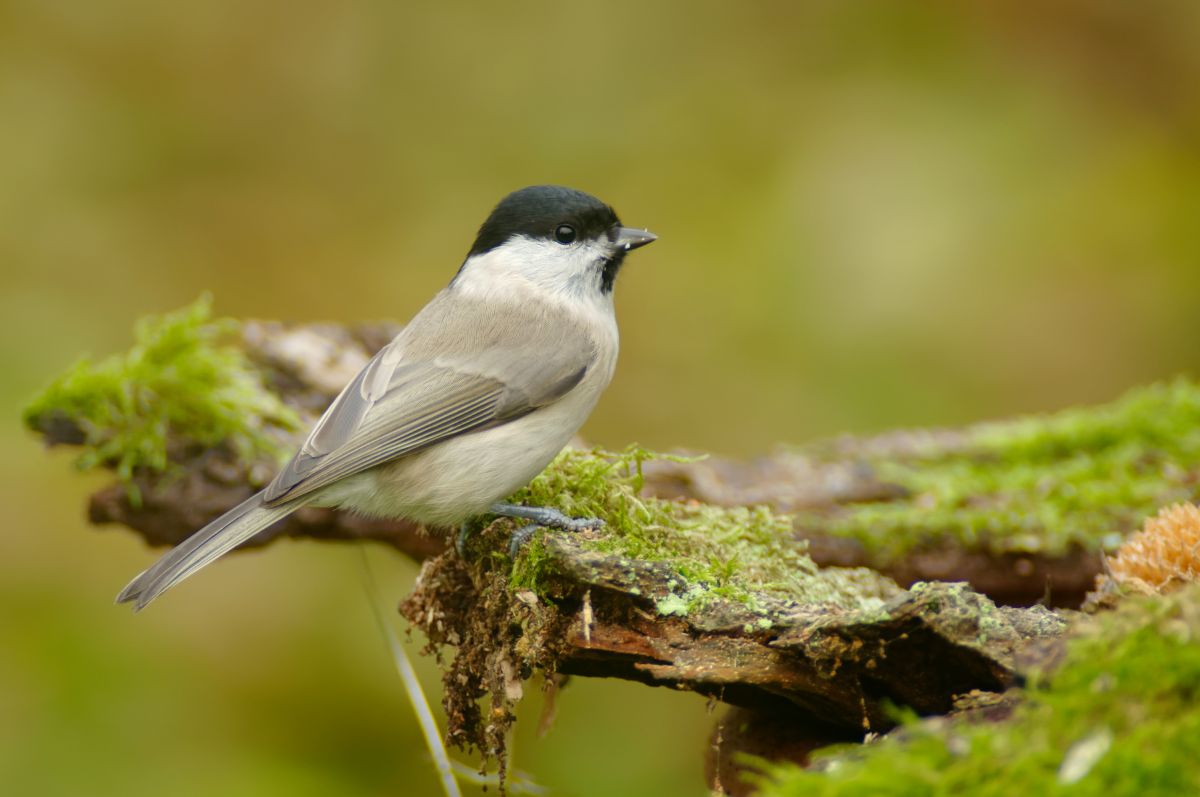
While it occupies the many natural forests across Europe and northeastern Asia, it’s made a niche in parks, backyard gardens, and tree-lined suburban communities.
Contents
Quick Facts
| Classification | Measurement | ||
| Scientific Name | Poecile palustris | Length | 11.5-13cm |
| Other Names | Saw whetter | Wingspan | 18-22cm |
| Family | Tits, crests, and warblers | Weight | 10-13g |
| Conservation Status | Least Concern, but populations are decreasing | Average Lifespan | 2-3 years |
| When To See | Year-round | ||
| Where To See | England, Wales, Southern Scotland, and northeast Asia, specifically Mongolia, Russia, Japan, Korea, and China |
What Do Marsh Tits Look Like?
Marsh tits display a rather distinctive plumage, with tawny or buff brown feathers dominating much of their round bodies accented with a glossy cap of black feathers on their heads and a beard-like patch under their beaks.
While the distinction is less evident in some, many have white cheeks, creating further contrast that helps their charming black top hats stand out.
Their beaks are black but have a white patch closer to the head along the upper and lower edge.
Until 1897, bird experts believed that marsh tits and willow tits were the same species, as they are virtually indistinguishable at first glance.
However, the marsh tit’s cap tends to have more shine, features a white patch on the beak, and lacks pale striations on the wings.
Marsh Tit Lifespan
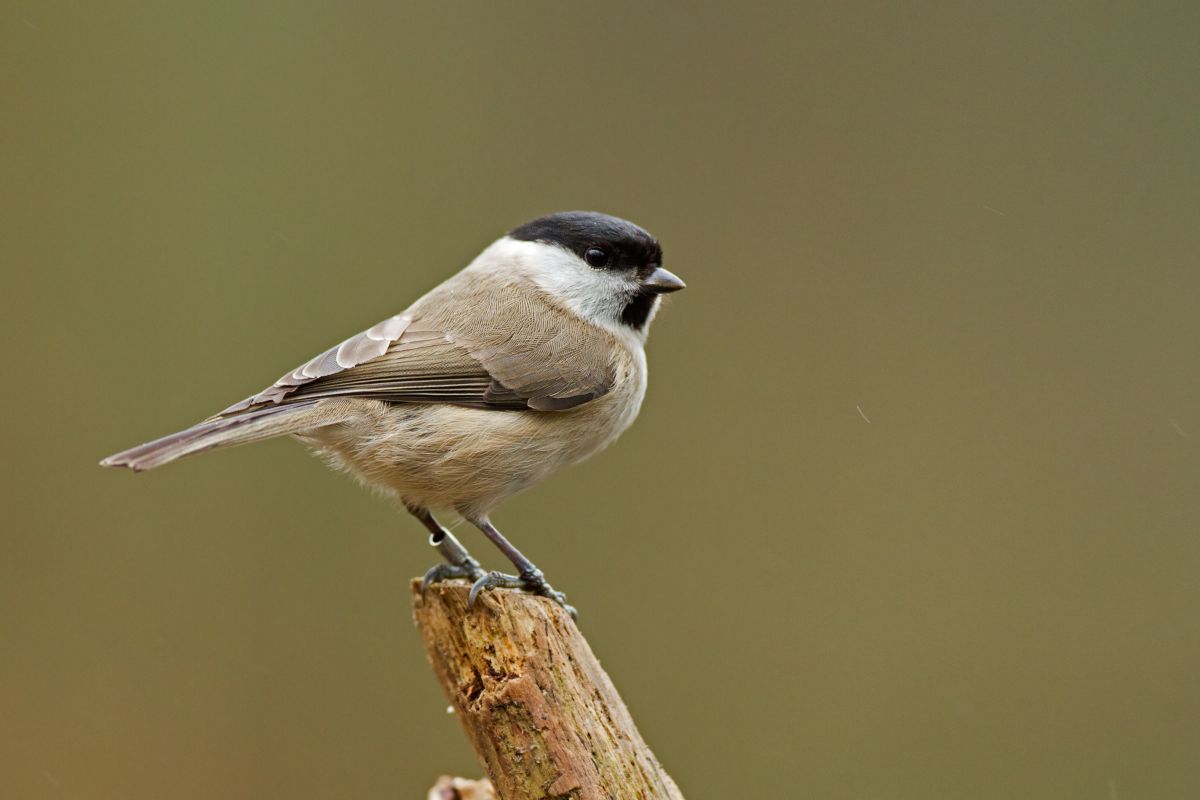
Marsh tits typically live 2-3 years and begin breeding after their first year.
However, one banded Cumbrian marsh tit was recaptured in 2014 after over a decade, earning the senior songbird a coveted spot in the British Trust for Ornithology’s record books.
Marsh Tit Habitat
One would assume that the marsh tit occupies bogs and swamps, but the term is a misnomer.
Instead, these European and Asian native songbirds occupy deciduous forests and woodlands that offer the protective cover of a broadleaf canopy and plenty of undergrowth for foraging.
They also enjoy backyard hedges and will happily feast on the fruits of common garden shrubs, trees, and feeders.
Where To See Marsh Tits?
If you’re searching for marsh tits in their natural habitat, they prefer mature forests with a healthy layer of shrubbery on the ground.
You’ll find them creating multiple food caches inside tree stumps or underneath fallen leaves and tree moss.
Do Marsh Tits Migrate?
Rather than taking an annual journey to far-flung locales, marsh tits are resident breeders who prefer home comforts all year round.
True to their homebody nature, it’s rare for this species of tit to travel more than 50 miles from their nesting grounds.
Marsh Tit Behavior in Mating
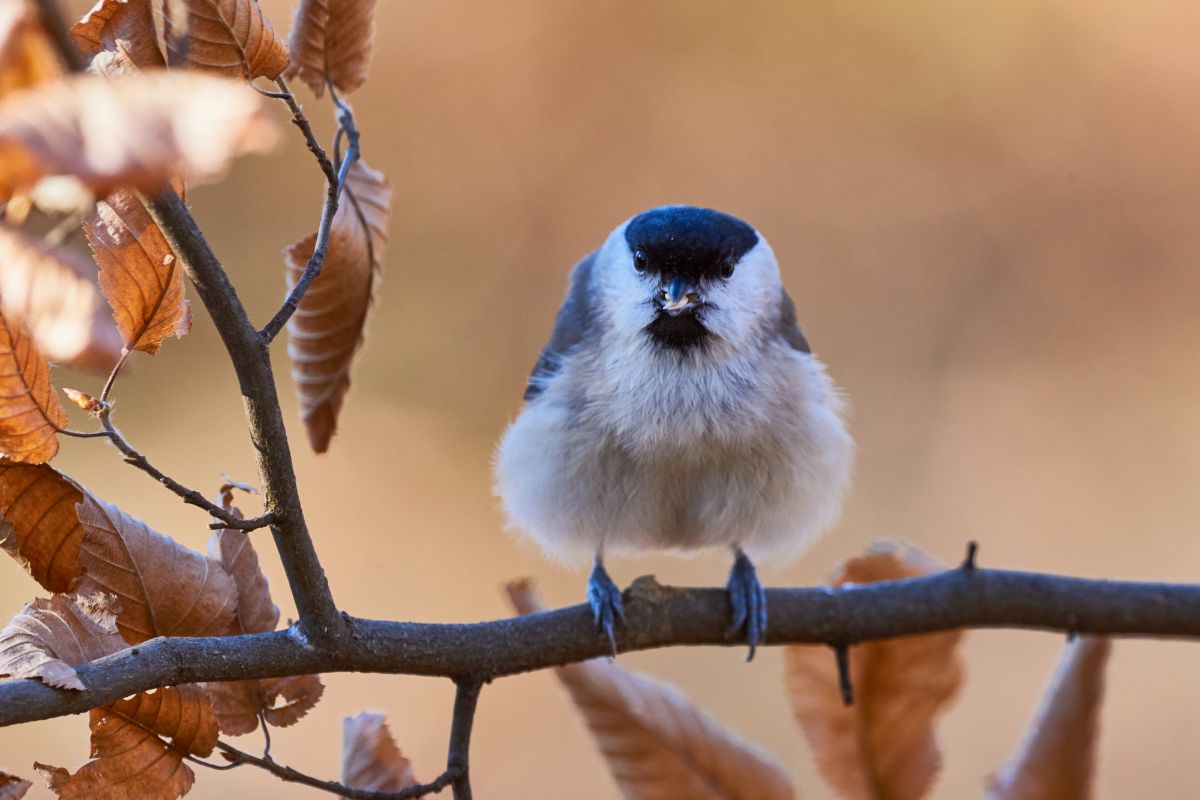
Like swans and penguins, marsh tits form monogamous couples and mate for life. Laying behaviors begin in late spring when they create clutches of 5-9 white eggs with scarlet-colored freckling.
Marsh tits do not create their nesting sites. Instead, they often use abandoned willow tit nests or existing tree holes to raise their hatchlings. If a piece of real estate is too small for their liking, they will widen out the hollow to accommodate their soon-to-be chicks.
Once the nest is of sufficient size, the birds busy themselves by lining the bottom with moss, hair, and feathers.
Parenting is an egalitarian affair, with mothers sitting on their eggs for around two weeks while fathers bring food to the nesting site. Once hatched, his duties continue in full force for the first 4-5 days, at which point the mother will begin leaving the nest to assist with feeding the hungry hatchlings.
Fledglings take flight after three weeks, at which point the family will stay together for an additional 11-15 days before the young split off to begin their life as adults.
What Do Marsh Tits Sound Like?
If you’ve ever gone on a hike in the woods only to hear what sounded like a tiny sneeze from the treetops, you may have wandered into marsh tit territory!
When they are agitated or threatened, the marsh tit lets loose a strange “PIT-chou” call that closely mimics the high-low pitch shift of the onomatopoetic sound for a sneeze– “AH-choo.”
After a series of punctuated “PIT-chou” songs, they often follow up with a lilting “pitchou-bee-bee-bee.”
Other calls include the repeated “schip” song typical to the tit family, as well as a “tyeu” song that earned the bird its original moniker of “saw whetter.”
Male vs. Female Marsh Tit Songs
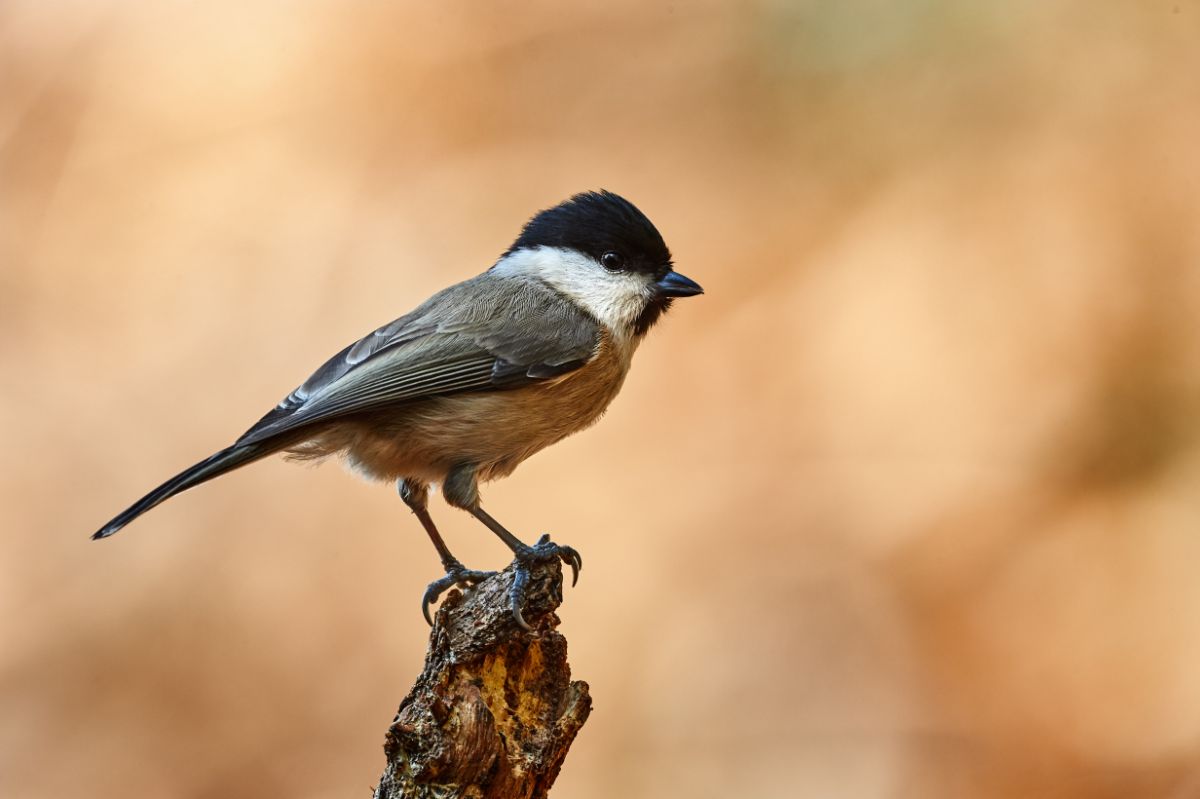
Researchers have found that male marsh tits can have up to eight songs, while females only demonstrate two types: those that signal their location to their mate and those that warn unwanted visitors to stay back.
The former consists of a soft “tu-tu” song, often sung in bursts of 4-5 notes, while the latter is more similar to a male’s territorial loud, aggressive “schip,” often used to accompany the male’s warnings.
Marsh Tit Diet
As omnivores, marsh tits subsist on the forest’s bounty of spiders, snails, grubs, slugs, and insects during the summer.
Once these protein-packed food sources run out as the mercury drops, they pivot to their well-stocked woodland pantries, which they spend the year filling with beechnuts, berries, seeds, and commercial feed left out by generous humans.
One of the most notable characteristics of the marsh tit is its abnormally large hippocampus, the part of the brain that controls spatial memory.
While all “storage” birds tend to have more prominent hippocampi, this area in marsh tits is 31% bigger than the much larger great tit, granting it an excellent memory for food caches.
Remarkably, they go so far as to eat the older hordes first because they can memorize the locations rather than conduct systematic checks like many other storage birds.
Final Thoughts
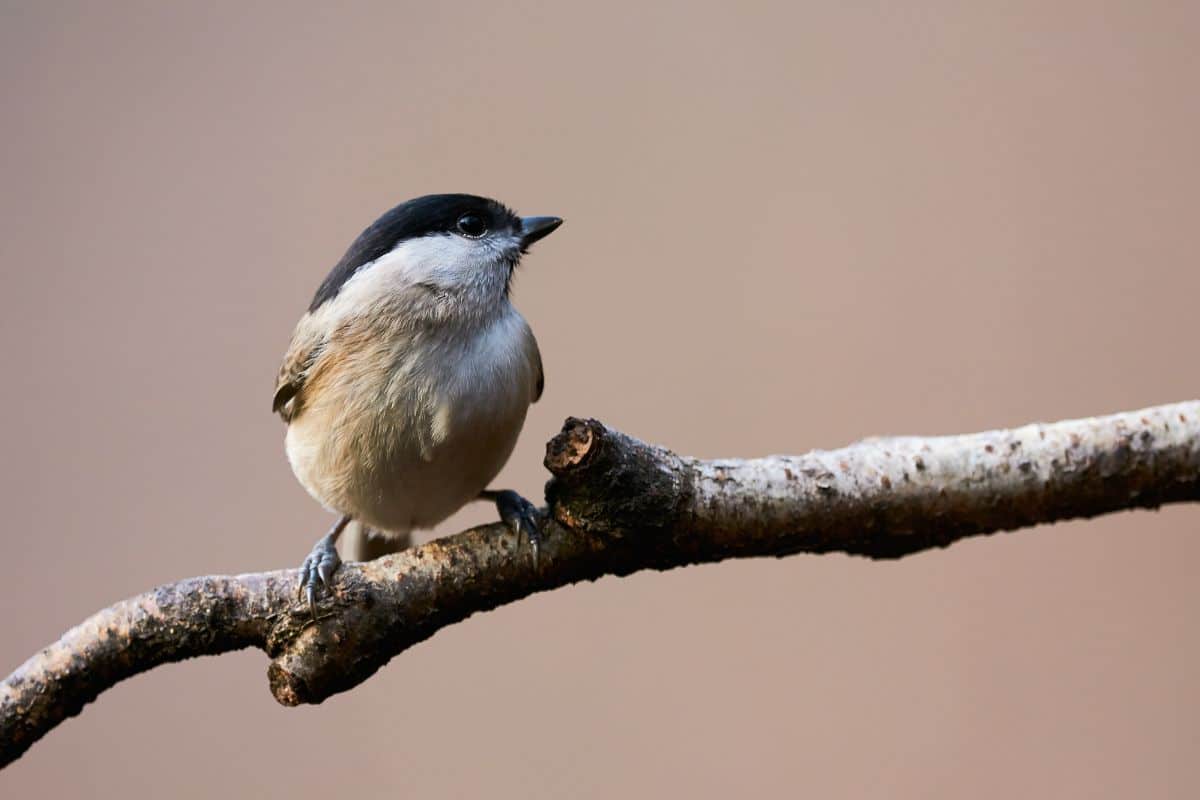
Marsh tits are intelligent birds that have long sparked the interest of professional ornithologists and birdwatching enthusiasts alike.
Their monogamous mating behavior, food storage behaviors, and charming calls are like many other species of tits, but their unique quirks make them one of Europe’s most frequently studied songbirds.
